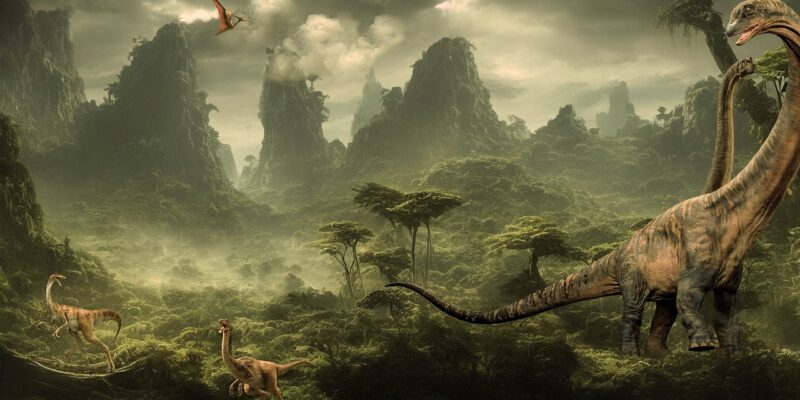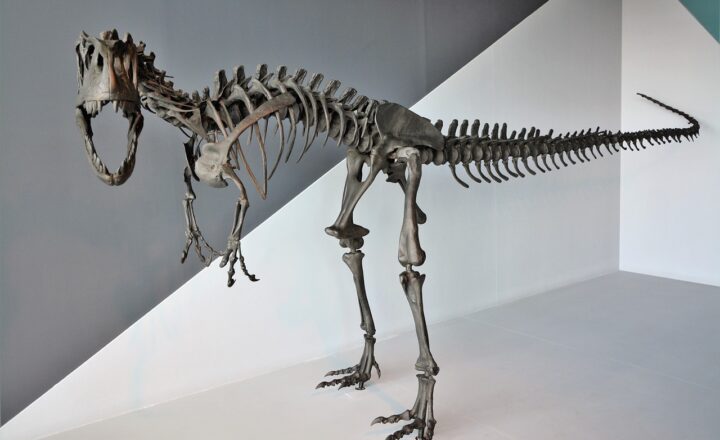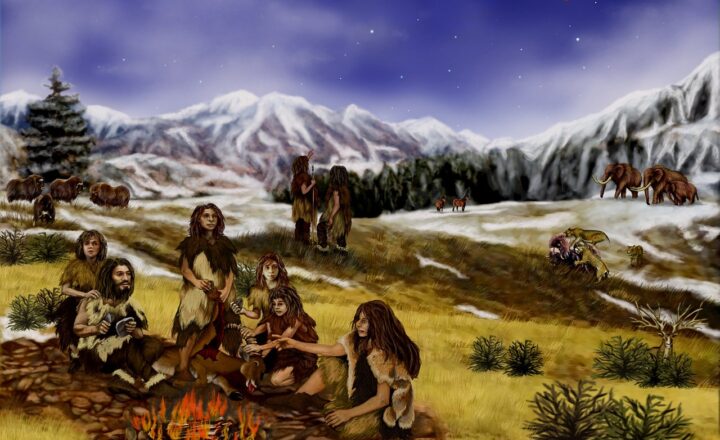
The story of dinosaurs is one of the most captivating narratives in the history of life on Earth. Long before their extinction, these magnificent creatures roamed the land, but did you know that they didn’t vanish completely? Rather, the lineage of many dinosaurs did survive and has significantly contributed to the evolution of modern birds and reptiles.
1. The Age of Dinosaurs: A Brief Overview
Dinosaurs dominated the Earth during the Mesozoic Era, which spanned approximately 180 million years. This era is divided into three distinct periods: the Triassic, Jurassic, and Cretaceous. During these times, dinosaurs evolved into various forms, adapting to their environments, which ranged from lush forests to arid deserts.
Dinosaurs were primarily divided into two main groups: sauropods (long-necked herbivores) and theropods (bipedal carnivores). The theropods, in particular, would prove to be the ancestors of modern birds.
2. The Extinction Event: A Catastrophic Change
About 66 million years ago, a mass extinction event occurred, attributed to several factors, including a massive asteroid impact, volcanic activity, and climate change. This event decimated approximately 75% of all species on Earth, including the majority of dinosaurs. However, not all dinosaurs succumbed to this cataclysmic event.
Many small theropods survived, benefiting from the new ecological niches created in the wake of this extinction. These survivors would eventually adapt and evolve into what we now recognize as birds.
3. The Link Between Dinosaurs and Birds
The connection between dinosaurs and birds is well-documented in the fossil record. Key evidence includes the discovery of feathered dinosaurs, such as Archaeopteryx, which lived approximately 150 million years ago. Archaeopteryx showcased both dinosaur and bird characteristics, possessing feathers and wings akin to modern birds, but also featuring sharp teeth and a long tail typical of dinosaurs.
Among the key features that link birds to theropods are:
- Hollow Bones: Just like modern birds, some theropods had hollow bones, making them lighter and more capable of flight.
- Feathers: Originally, feathers may have evolved for insulation or display, with flight coming later.
- Three-toed Limbs: The structure of the foot in certain theropods closely resembles that of birds, providing increased agility and dexterity.
These anatomical similarities confirm that birds are, in fact, living descendants of theropod dinosaurs, representing a fascinating case of evolutionary continuity.
4. Evolutionary Adaptations: From Dinosaurs to Birds
As birds emerged from the remnants of theropod dinosaurs, they underwent significant evolutionary adaptations that enabled flight.
Some notable adaptations include:
- Wing Structure: Wings evolved from the forelimbs of theropods. The bone structure changed significantly for enhanced aerodynamics and flight capabilities.
- Respiratory System: Birds developed a highly efficient respiratory system, including air sacs that allow for continuous airflow, aiding in stamina and endurance during flight.
- Dietary Changes: With the advent of flight, diet diversified. Birds adapted to various niches, leading to changes in beak shape and feeding mechanisms. This adaptability is akin to how dinosaurs evolved to exploit different ecological niches in their time.
Through these adaptations, birds have successfully colonized various habitats across the globe—from forests to deserts and even polar regions.
5. The Evolution of Reptiles Post-Dinosaurs
While birds represent the direct descendants of dinosaurs, reptiles also experienced significant evolutionary changes after the extinction event. Lizards, snakes, crocodilians, and turtles diversified in the absence of the giant dinosaurs, adapting to occupy ecological niches that were previously held by these massive creatures.
Key evolutionary changes in modern reptiles include:
- Size Variation: Reptiles adapted in size, leading to a vast range of species, from tiny geckos to large crocodiles.
- Modes of Locomotion: Reptiles evolved different means of movement, including bipedalism in some lineages and various swimming adaptations in aquatic reptiles.
- Thermoregulation: Modern reptiles adapted their body temperature regulation strategies, leveraging environmental conditions to maintain optimal metabolic functioning./
These adaptations allowed reptiles to thrive in new environments and survive through subsequent climate changes and habitat shifts.
6. The Continuing Legacy of Dinosaurs in Today’s Wildlife
The legacy of dinosaurs is vividly alive in both birds and reptiles. From the smallest sparrow to massive crocodiles, remnants of this ancient lineage persist in the forms, behaviors, and ecological roles of today’s species.
Birds can be observed displaying courtship behaviors, nesting habits, and flock dynamics that are reminiscent of their dinosaur ancestors. Furthermore, reptiles exhibit territorial behaviors and adaptations in coloration and camouflage that hark back to their prehistoric relatives.
The research into dinosaur evolution continues to uncover fascinating insights into how these ancient creatures survived and thrived in dynamic environments, shaping the flora and fauna we recognize today.
7. Conclusion: The Evolutionary Journey Continues
In conclusion, the evolutionary journey from dinosaurs to present-day birds and reptiles reflects the resilience of life in adapting to change. The extinction of the dinosaurs marked not the end of their legacy but the beginning of a new chapter in life on Earth.
Birds and reptiles, as living witnesses of this rich history, illustrate the profound connection between ancient and modern species. Through ongoing research and discoveries in paleontology and evolutionary biology, we gain a deeper appreciation of our planet’s biological heritage and the incredible story of survival that continues to unfold.
As we look ahead, understanding the evolution and adaptation in wildlife reminds us to cherish biodiversity and the interconnectedness of life forms across our planet.







